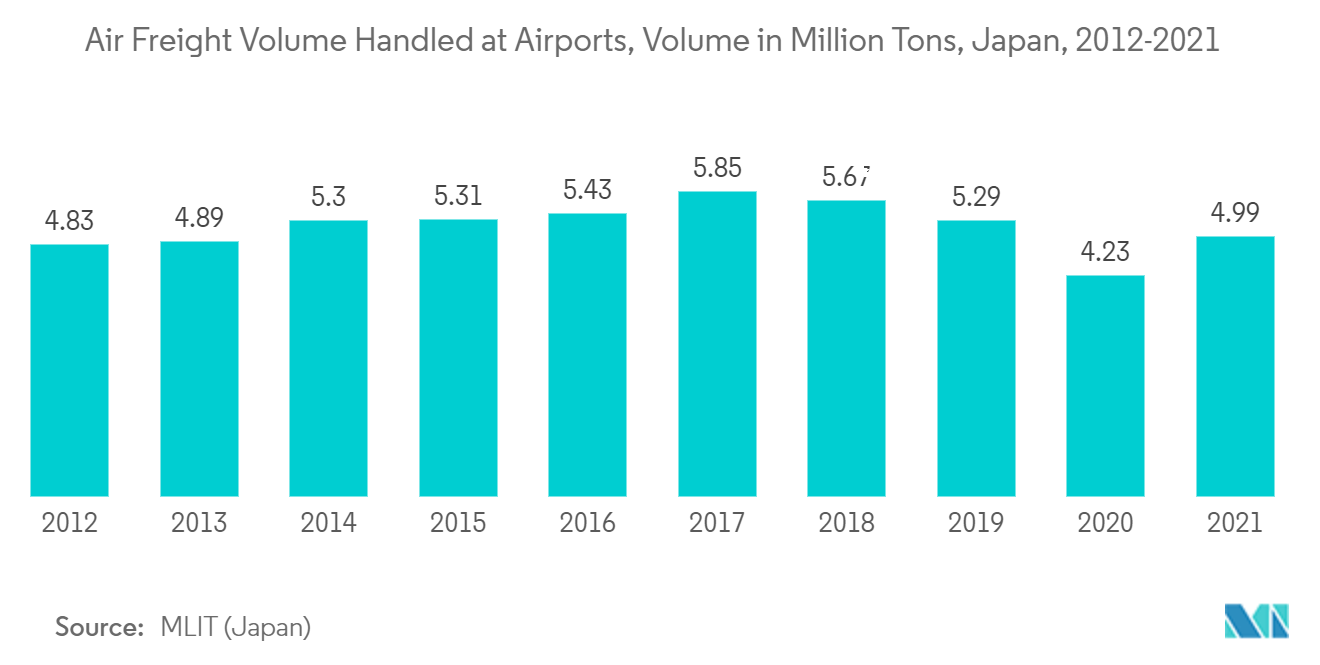Market Trends of Intra-Asia Freight Forwarding Industry
Booming E-commerce Sector is Driving the Market
In 2022, e-commerce in the Asia Pacific region witnessed significant growth, primarily driven by rapid urbanization, the growing middle class, the increasing penetration of digital payments, and the expansion of the e-commerce ecosystem. In addition, the pandemic outbreak also acted as a catalyst for accelerating online retail sales in the region. The growing e-commerce ecosystem requires freight and logistics support for the smooth movement of shipments.
Moreover, e-commerce growth is driving the retail industry toward omnichannel, and in 2021, the region remained the largest market for retail e-commerce, with digital sales amounting to more than USD 2.9 trillion, whereas these sales were three times greater than those in North America and nearly five times greater than those in Western Europe. In addition, in 2022, China will have outperformed the e-commerce market by a large margin.
Meanwhile, in 2022, fast-moving consumer goods (FMCG) e-commerce emerged as the second-biggest retail channel next to traditional trade, which accounted for more than 19% of sales in the region. However, as per industry experts' estimates, e-commerce accounts for nearly 30% of FMCG sales in South Korea (34%), and China (31%). Moreover, in 2022, China topped online spending in the region, followed by Indonesia and India. Thus, the growing e-commerce sales boost the systematic supply chain and logistics services to provide smooth end-to-end transfers of goods, further resulting in the expansion of the freight forwarding market.

Japan is Experiencing Significant Growth in the Market
Japan's freight forwarding business is growing quickly. This is mostly due to more trade activities like importing and exporting.In December 2022, exports from the country reached a growth rate of more than 17%, and imports reached nearly 41% when compared to the same period in the previous year. Also, Japan's total exports of goods were worth more than USD 750 billion in 2021, which was an increase of 18% from the year before.
Moreover, in 2021, the major export destinations of Japan will be China with an export share of nearly 21% (USD 160 billion), Korea with an export share of nearly 6.9% (USD 52 billion), and Hong Kong and Thailand with an export share of 4.6% and 4.3%, respectively. Also, China is one of the biggest importers, with a share of more than 24% (1875 billion USD). Australia and other Asian countries are also big importers.
Also, air cargo transportation is growing a lot in the country. This is mostly because trade is growing, there aren't enough truck drivers, port traffic is getting worse, etc. In 2021, Japan's Narita Airport, the country's largest airport for air freight, will handle more than 2.6 million tons of air cargo, an increase of 32% when compared to the previous year. In addition, in 2021, the volume of air freight handled at Japanese airports amounted to more than 4.99 million tons, which was up by 18% when compared to the previous year. So, the demand for freight forwarders in the country is likely to be driven by the growth of freight forwarding.


